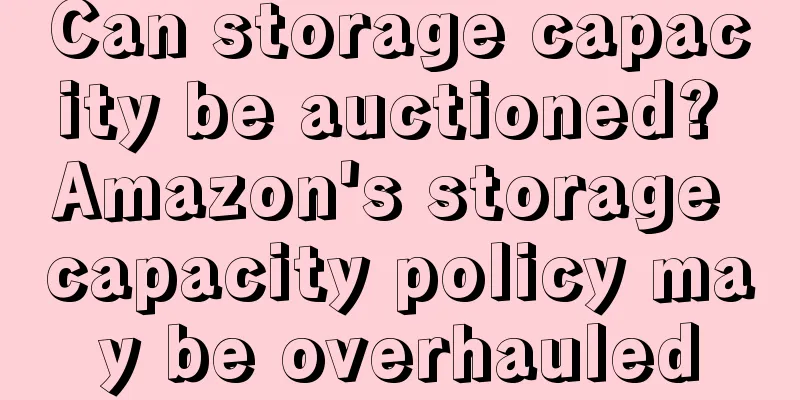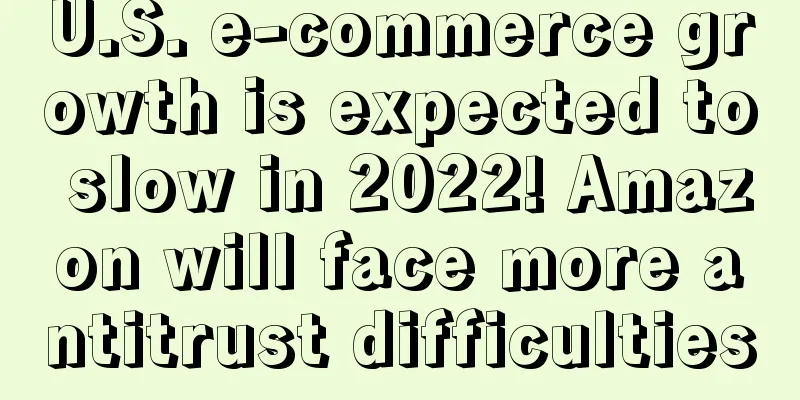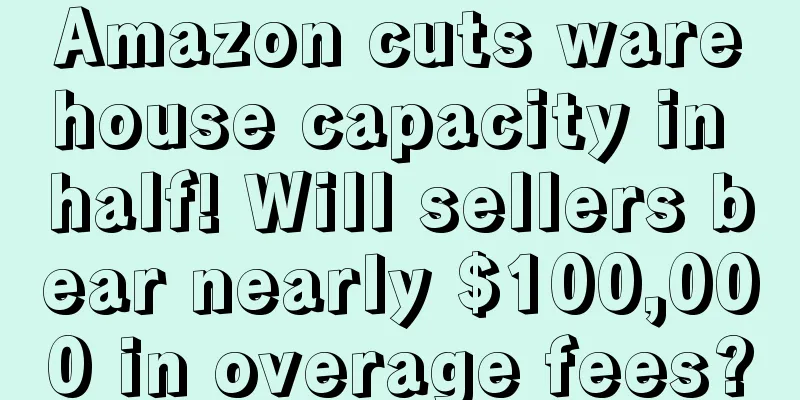Can storage capacity be auctioned? Amazon's storage capacity policy may be overhauled

|
According to the latest foreign media reports, Amazon's layoffs will exceed 17,000, exceeding the initial plan of 10,000. This will also be the largest layoff of a large technology company to date.
Since launching its layoff plan in November last year, Amazon has been making big moves to cut into departments such as retail, equipment and human resources. However, at the same time, facing the coming year-end promotions, Amazon seems to be in a dilemma of staff shortage, which not only delays the delivery time, but also affects the efficiency of goods entering the warehouse, which further causes the sellers' storage capacity to plummet during the peak season and disrupts the delivery plan. However, this series of chain reactions seems to have reached a turning point. Recently, there have been reports that Amazon may launch paid storage capacity.
At the beginning of the new year, the Spring Festival is approaching, which is a good time for sellers to prepare goods and complete sales. However, during the New Year's Day period, many sellers suffered a heavy blow at the beginning of the year, and a large amount of inventory capacity was cut at the end of the peak season. Since the middle of last year, the storage capacity of many Amazon sellers has repeatedly shrunk, disrupting the peak season delivery plan, and even facing the threat of out-of-stock, and missing out on various major promotions. As a result, the storage capacity issue has become a major challenge for sellers in peak season operations. Recently, some sellers learned from their investment managers that Amazon may launch a paid purchase of storage capacity policy, which will be announced on January 10 and officially implemented on March 1. The official has not yet issued a definite notice on this, but sellers have already had different opinions: "The manager said that a new policy notice will be issued on January 10th. It will be especially friendly to new accounts, but old accounts will have to rely on their own abilities. Sales momentum, account health, and IPI are all major challenges." "I opened this road and planted this tree. If you want to use the storage capacity, leave some money to buy it." “Monthly storage fees, price increases during peak seasons, long-term storage fees…how much does Amazon charge?” In fact, last year Amazon launched a warehouse capacity limit manager program for sellers in the U.S. If the IPI score is lower than 400 and the storage capacity is limited, sellers can use this tool to apply for more FBA storage space for strong- selling products.
▲ The picture comes from Amazon Global Store The specific operation is that the seller selects the size of the inventory space that needs to be increased and specifies the reservation fee that he is willing to pay for this space. The reservation fee adopts a bidding strategy, and Amazon will charge the same reservation fee to other sellers who apply and are approved in the same week. Therefore, if other sellers who apply later are approved for additional storage space at a lower unit reservation fee, the other reservation fees will also be reduced. ▲ The picture comes from the seller communication group More importantly, the sales generated by the ASINs in this additional storage space can earn performance points to offset the storage space fees. If the accumulated points are sufficient, 100% of the reserved fees can be deducted. ▲ The picture comes from Amazon Global Store This policy seems to have some meaning of bidding for storage capacity, but the points offset rule also saves sellers a certain amount of money. Of course, it is worth noting that it is aimed at sellers whose storage is restricted due to insufficient IPI scores on the US site. There is currently no specific and clear news about the latest paid storage capacity policy. Some sellers said that once implemented, the above capacity expansion policy may be cancelled or become more stringent. However, we learned from Amazon officials that this new policy will bring many opportunities for sellers, and the official will announce a comprehensive and detailed interpretation on January 10. ▲ The picture comes from Amazon Global Store
As rumors of paid storage capacity spread, another piece of news also sparked heated discussions among Amazon sellers. It is reported that Amazon may make changes to its replenishment restrictions and storage capacity. Prior to this, Amazon's replenishment limit and storage limit policies were independent of each other. The former restricted the replenishment quantity, with a frequency of once a week. If the limit was exceeded, the creation of shipments would be stopped. The latter restricted the storage volume, and the IPI score was assessed every quarter. If it was qualified, the storage capacity would be unlimited in the next quarter. ▲ The picture comes from Amazon Global Store Now, Amazon may merge replenishment limits and storage capacity limits into a single Amazon Logistics storage limit. A single limit for each storage type will determine the amount of inventory that sellers can send and store in Amazon's fulfillment centers. Specific changes include:
|
Recommend
Amazon Black Friday "crash" alarm sounded! Problems frequently!
Black Friday is over, but Amazon sellers are still...
Procurement Tips: How to deal with the supplier's minimum order quantity requirements?
Purchasing goods from suppliers is not as simple ...
U.S. online grocery market continues to grow, with sales reaching $7.7 billion in June
Recently, according to foreign media reports, the ...
What is Shopee Preferred Seller? Shopee Preferred Seller Review
Shopee Preferred Sellers are selected by Shopee to...
What is Zon.Tools? Zon.Tools Review
Zon.Tools is an Amazon PPC automation management t...
What is Reddit? Reddit Review
Reddit is the largest online community in the Unit...
Easter spending in the U.S. is expected to reach $24 billion! Consumers plan to buy these...
According to an annual survey by the National Reta...
There is no solution to the "port traffic jam"? The United States has launched another heavy blow: adding a $100 detention fee!
It is learned that according to foreign media repo...
Sales soared 705%! Amazon's best seller relies on this product to dominate the list BS!
▶ Video account attention cross-border navigation ...
Essential tricks for sellers: Tips and tricks for bidding on Amazon ads
When placing Amazon ads, sellers need to learn how...
Cross-border winter! How can small and medium-sized sellers save themselves under the new mask export regulations?
Today, I believe everyone has been flooded with th...
How to increase the natural traffic without evaluation when the product is out of stock and re-launched? The natural traffic is very small when it depends on advertising...
Anonymous user My C position Basic situation: The ...
Amazon bans VC accounts on a large scale? Cutting out VC middlemen
Recently, Amazon was exposed to have banned VC acc...
What is Pagsmile? Pagsmile Review
Pagsmile is a Brazilian cross-border payment platf...
How to post in SD if the store feedback is less than 1000
————This method is particularly effective when cl...









